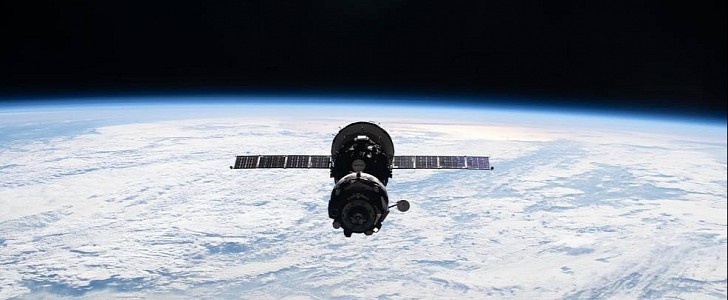A Soyuz MS-18 spacecraft pushed the space station out of its position during a test firing of thrusters on Friday, October 15th. This is the second time a Russian spacecraft has caused such an incident since July.
The Soyuz MS-18 spacecraft is expected to carry three space travelers living aboard the orbiting lab, including a Russian actress and her producer-director, back to Earth on Sunday, October 17th. To ensure that everything worked accordingly before their departure, Russian flight controllers conducted a scheduled thruster firing test on the spacecraft.
On Monday morning, the thruster firing continued after the end of the test window. This pushed the ISS slightly out of position at 5:13 a.m. EDT. It took half an hour for the flight controllers to regain attitude control of the space station. Currently, the orbiting lab is in stable condition, and the crew is safe. Flight controllers are assessing the situation.
"NASA and Roscosmos are collaborating to understand the root cause," reads a statement from NASA.
This is not the first incident of such nature. On July 29th, the Russian Multipurpose Laboratory Module Nauka, which serves as a science facility, docking port, and spacewalk airlock for space operations, encountered a software failure.
The module suddenly fired its thrusters, sending the ISS into an out-of-control spin. However, compared to the July 29th event, the ISS suffered a slight attitude change this time.
This means that the departure of the Soyuz MS-18 spacecraft remains on track. Commander Oleg Novitskiy and spaceflight participants Yulia Peresild and Klim Shipenko will return to Earth on Sunday.
They will undock from the Nauka multipurpose laboratory module on Saturday at 9:14 p.m. EDT. Then, in a Soyuz descent module, they'll soar through the sky for a little more than three hours before making a parachute-assisted landing on the steppe of Kazakhstan.
On Monday morning, the thruster firing continued after the end of the test window. This pushed the ISS slightly out of position at 5:13 a.m. EDT. It took half an hour for the flight controllers to regain attitude control of the space station. Currently, the orbiting lab is in stable condition, and the crew is safe. Flight controllers are assessing the situation.
"NASA and Roscosmos are collaborating to understand the root cause," reads a statement from NASA.
This is not the first incident of such nature. On July 29th, the Russian Multipurpose Laboratory Module Nauka, which serves as a science facility, docking port, and spacewalk airlock for space operations, encountered a software failure.
The module suddenly fired its thrusters, sending the ISS into an out-of-control spin. However, compared to the July 29th event, the ISS suffered a slight attitude change this time.
This means that the departure of the Soyuz MS-18 spacecraft remains on track. Commander Oleg Novitskiy and spaceflight participants Yulia Peresild and Klim Shipenko will return to Earth on Sunday.
They will undock from the Nauka multipurpose laboratory module on Saturday at 9:14 p.m. EDT. Then, in a Soyuz descent module, they'll soar through the sky for a little more than three hours before making a parachute-assisted landing on the steppe of Kazakhstan.
The Exp 65 crew worked science and upkeep as the station regained attitude control Friday morning. Meanwhile, a Russian trio gets ready for a Saturday night departure. https://t.co/a3ru7jQ2FK
— International Space Station (@Space_Station) October 15, 2021






